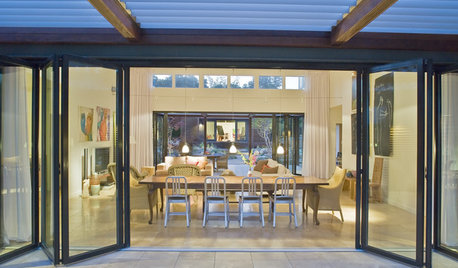Two tree questions (Leftwood, if your about, I'd love your input)
heleninramsey
14 years ago
Related Stories

FUN HOUZZEverything I Need to Know About Decorating I Learned from Downton Abbey
Mind your manors with these 10 decorating tips from the PBS series, returning on January 5
Full Story
GREEN BUILDINGConsidering Concrete Floors? 3 Green-Minded Questions to Ask
Learn what’s in your concrete and about sustainability to make a healthy choice for your home and the earth
Full Story
REMODELING GUIDESConsidering a Fixer-Upper? 15 Questions to Ask First
Learn about the hidden costs and treasures of older homes to avoid budget surprises and accidentally tossing valuable features
Full Story
EXTERIORSCurb Appeal Feeling a Little Off? Some Questions to Consider
Color, scale, proportion, trim ... 14 things to think about if your exterior is bugging you
Full Story
ARCHITECTURE10 Things to Know About Prefab Homes
Are prefab homes less costly, faster to build and greener than homes constructed onsite? Here are answers to those questions and more
Full Story
REMODELING GUIDESSurvive Your Home Remodel: 11 Must-Ask Questions
Plan ahead to keep minor hassles from turning into major headaches during an extensive renovation
Full Story
GREEN BUILDINGWhat's LEED All About, Anyway?
If you're looking for a sustainable, energy-efficient home, look into LEED certification. Learn about the program and its rating system here
Full Story
WORKING WITH PROS12 Questions Your Interior Designer Should Ask You
The best decorators aren’t dictators — and they’re not mind readers either. To understand your tastes, they need this essential info
Full Story
FEEL-GOOD HOMEThe Question That Can Make You Love Your Home More
Change your relationship with your house for the better by focusing on the answer to something designers often ask
Full Story
DOORS5 Questions to Ask Before Installing a Barn Door
Find out whether that barn door you love is the right solution for your space
Full StorySponsored






hostaholic2 z 4, MN
heleninramseyOriginal Author
Related Professionals
Ashland Landscape Architects & Landscape Designers · Foothill Ranch Landscape Architects & Landscape Designers · Fort Lee Landscape Architects & Landscape Designers · Saint Matthews Landscape Architects & Landscape Designers · Salem Landscape Contractors · Concord Landscape Contractors · Americus Landscape Contractors · Fort Myers Landscape Contractors · Lees Summit Landscape Contractors · Lemoore Landscape Contractors · North Potomac Landscape Contractors · Ponte Vedra Beach Landscape Contractors · Ramsey Landscape Contractors · Salmon Creek Landscape Contractors · Baileys Crossroads Landscape Contractorshostaholic2 z 4, MN
janroze
janroze
leftwood
heleninramseyOriginal Author
kaptainkr
hostaholic2 z 4, MN
ginkgonut